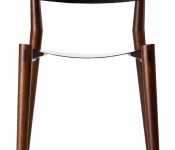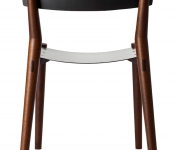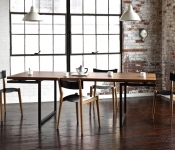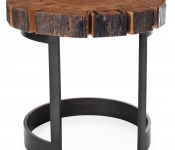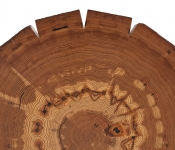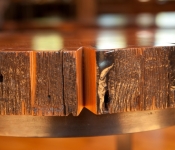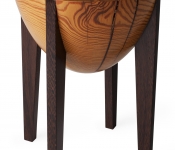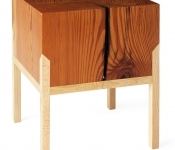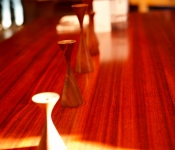Artist Bio
Miles & May draw inspiration from their community and their physical surroundings.
In addition to donating 10% of their net profits to local charities, they operate mentor and internship programs for young adults to ensure that American design and craftsmanship live on. Every raw material also comes from as close to home as possible to support local business and protect the environment.
For Miles & May, home is the Cracker Factory, a 65,000 square foot turn of the century complex in the Finger Lakes region of upstate New York.
Half of the factory is dedicated to their manufacturing facilities while the remainder is used for artistic and community development: gallery and exhibition space, artist studios, and a letterpress printing shop.
The community space regularly hosts arts events, live performances and literary events curated by our 501(c)(3) not-for-profit, 3 Stories.
They have also been presented in various magazines including and certainly not limited to: Interior Design Magazine (2004, 2009, 2010, & 2012), Robb Report Magazine (2006), Elements of Living (2005), and Oprah (2004).
Artist Statement
We believe that honest design articulated through unique material and impeccable craftsmanship will withstand the test of time.
We design our furniture to showcase the history and character of each hand-selected piece of wood, rather than force-fitting the material into a specific design.
Every item is also created by hand using both traditional methods and modern techniques.
The final result is exceptional furniture that’s made to last a lifetime.
Nearly 90 percent of our wood is reclaimed, recycled, or from local non-commercial sources.
This dedication runs deeper than environmental consciousness. Its about sourcing the right material for the right design, and most of our material can’t be bought at a lumber yard. We hand select virtually every timber we use and have it milled and dried to our specifications.
Our design process stays true to each piece of wood so that we may share with you what we find special in it. This process is time consuming, often spanning years but the end result is well worth the wait: material and form that are meant to be together.


